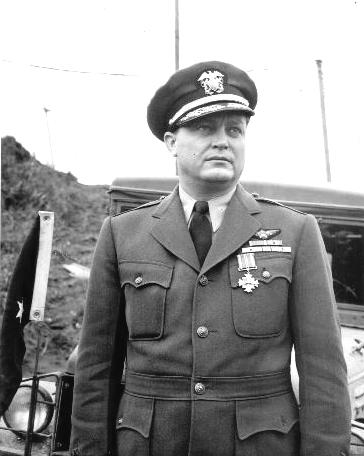USS Franklin Research Assistance Needed

“1300 pursuant to ComCarDiv TWO, serial 1303 of 5 November, and BuPers dispatch 211729/H5544 of 29 October, Captain J.W. Shoemaker, U.S. Navy, commanding U.S.S. Franklin was relieved as commanding officer. Captain Leslie E Gehres, U.S. Navy, ( 34282) assumed command of U.S.S. Franklin in compliance with basic orders and endorsement of ComFairWing serial 1467 of 26 August 1944.”
—U.S.S. Franklin Decklog, Wednesday 8 November 1944
If you are new here, I am researching a book on USS Franklin, whose crew remains, to this day, the most decorated in the history of the US Navy. The crew saved their ship on 19 March 1945, battling fires, explosions, and flooded compartments for 11 hours during a mission just off the coast of Japan.
Here is my current research challenge. Captain Leslie Gehres became the first non-Naval Academy graduate to command an Essex-class carrier when he took command of Franklin.
He hadn’t served on a carrier or other ship since World War II started. What kind of briefing, orientation, or training, if any, did he receive before boarding Franklin?
I contacted several learned historians and did my own research, but there is no hint of any orientation given to any captain assuming carrier command.
How Were New Carrier Captains “Brought Up To Speed?”
By 1944, many “emerging technologies” had been incorporated into US Navy’s tactics. Here are three of many:
- Radar integrated with Fighter Direction
- Ship formations to protect against air, surface, and submarine attack
- Underway replenishment
It is hard to believe that, at the least, a briefing of an incoming captain of a fleet carrier was not held, even if it was the captain sitting down with another officer one-on-one. Especially when captains such as Gehres did not come from the same theater and had been serving ashore since the war started.
One historian I contacted said he believed that the Navy relied on “on-the-job” training, and he may well be right. Fortunately, Gehres was blessed with a superb exec and other department heads. Still, I have a hard time believing that Admiral George Murray, who commanded naval aviation assets in the Pacific and was a former carrier captain, didn’t cover certain subjects when officers rotated through Pearl Harbor on their way to carrier commands.
How to Reach Me
If you know of such an orientation or training curriculum, please use this contact form to let me know. As General MacArthur would say, “I’ll mention your name in dispatches!”
Thanks!
Did you arrive here via a search engine? I am the author of the forthcoming book Heroes By The Hundreds: The Story of the USS Franklin (CV-13). In addition to writing about the bravery of the crews that saved her, I will discuss the lessons we can learn in leadership and decision-making and the changes the US Navy made because of those lessons.
Feel free to follow me on Facebook. There, I am M. Glenn Ross, Author. I also write a monthly newsletter, Glenn’s Action Report, about subjects I find interesting in my research. You can sign up for it below. Feel free to leave a comment or ask a question. Thanks for reading.
-Glenn